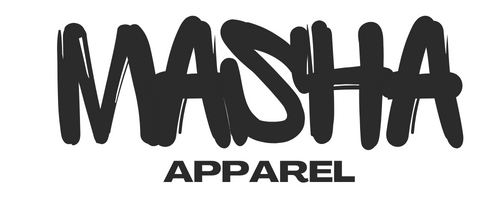In recent years, there has been a growing demand for sustainable and ethical fashion. Unfortunately, this has also led to an increase in greenwashing – a deceptive marketing tactic in which brands falsely present themselves as more environmentally-friendly than they really are. Greenwashing is particularly prevalent in the fashion industry, where companies use vague claims, misleading labels, and clever marketing strategies to attract eco-conscious consumers. In this blog post, we'll help you navigate the world of green fashion and ensure you make genuinely sustainable choices.
First, it's essential to understand what greenwashing is and why it's harmful. Greenwashing occurs when companies exaggerate or misrepresent the environmental benefits of their products or practices, leading consumers to believe they're making eco-friendly choices. This practice not only hinders genuine progress toward sustainability but also exploits consumers' goodwill and trust.
To spot greenwashing, familiarize yourself with some common tactics that brands use to mislead customers. For example, be cautious of vague language like "green," "eco-friendly," and "sustainable" without clear explanations or certifications to back up the claims. Additionally, some brands use labels that resemble official certifications, even though they don't have any real environmental credentials. Always verify the legitimacy of labels and certifications.
Companies may also promote one sustainable aspect of their product while ignoring other environmental concerns, like using organic cotton but manufacturing in polluting factories. This is known as hidden trade-offs. Some notable examples of this in the fashion industry involve large corporations making misleading claims about their sustainability efforts. For instance, H&M's "Conscious Collection" was criticized for not providing detailed information about the materials used, the percentage of sustainable materials in each garment, or the overall impact of the collection on the environment. Similarly, Forever 21 launched a "Go Green" campaign that claimed to use eco-friendly materials, but the brand failed to address issues related to its fast-fashion business model and the environmental impact of its manufacturing processes.
Another tactic to watch for is irrelevant claims, where brands highlight practices that are already required by law or industry standards as if they're voluntary, extraordinary efforts. For example, a clothing brand may advertise that it doesn't use azo dyes, which are known to be harmful to the environment and human health. However, azo dyes have been banned in the European Union since 2003, so avoiding them is not a unique selling point but a legal requirement. Similarly, a brand may boast about its compliance with wastewater treatment regulations, when in fact, these regulations are mandatory for all manufacturers in the industry. By focusing on these commonplace, legally mandated practices, companies can create an illusion of environmental responsibility without making any real commitment to sustainability.
Fabricated claims and false endorsements: Some companies may resort to outright fabricating their environmental achievements or falsely implying endorsements from reputable organizations. For example, a brand might claim that their products are made from a "patented, eco-friendly fabric" when no such patent exists or that their products have been "approved by environmental organizations" without providing any evidence to support these claims. This type of greenwashing is particularly insidious, as it relies on consumers' trust in the brand and their desire to make environmentally responsible choices. In 2010, Walmart faced a lawsuit over its "Love, Earth" jewelry line. The company claimed that the line was produced using environmentally and socially responsible practices, which included "rigorous" mine-to-market tracking and certification. However, an investigation by the environmental group Earthworks discovered that Walmart could not substantiate these claims and found that the company was unable to provide any evidence to support its assertions of responsible sourcing. This example illustrates how a brand can make misleading or fabricated claims to create an illusion of environmental responsibility.
Another controversial topic in sustainable fashion is the use of recycled water bottle fabric, or rPET (recycled polyethylene terephthalate). This material, made from recycled plastic bottles, has been praised for its potential to divert plastic waste from landfills and reduce resource consumption. However, critics argue that rPET fabric may contribute to microplastic pollution, as tiny plastic fibers are released during washing. Moreover, the production of rPET fabric still relies on non-renewable resources and energy-intensive processes. While using recycled water bottle fabric may be a step in the right direction, it is essential to consider the broader context and weigh the pros and cons of this material.
When considering a purchase, take the time to research the brands you're interested in. Genuine eco-friendly brands should have a detailed, publicly available sustainability policy outlining their goals, practices, and progress. Trustworthy brands often hold certifications or adhere to recognized standards, like Fair Trade, GOTS (Global Organic Textile Standard), or B Corp. Additionally, look for brands that are transparent about their supply chains, manufacturing processes, and materials, offering clear, accessible information for consumers.
In conclusion, greenwashing in the fashion industry undermines genuine efforts towards a sustainable future. By educating yourself on common greenwashing tactics, researching brands, and supporting genuinely sustainable companies, you can make informed choices that contribute to a greener, more ethical world. Remember, every purchase you make has an impact – choose wisely.
